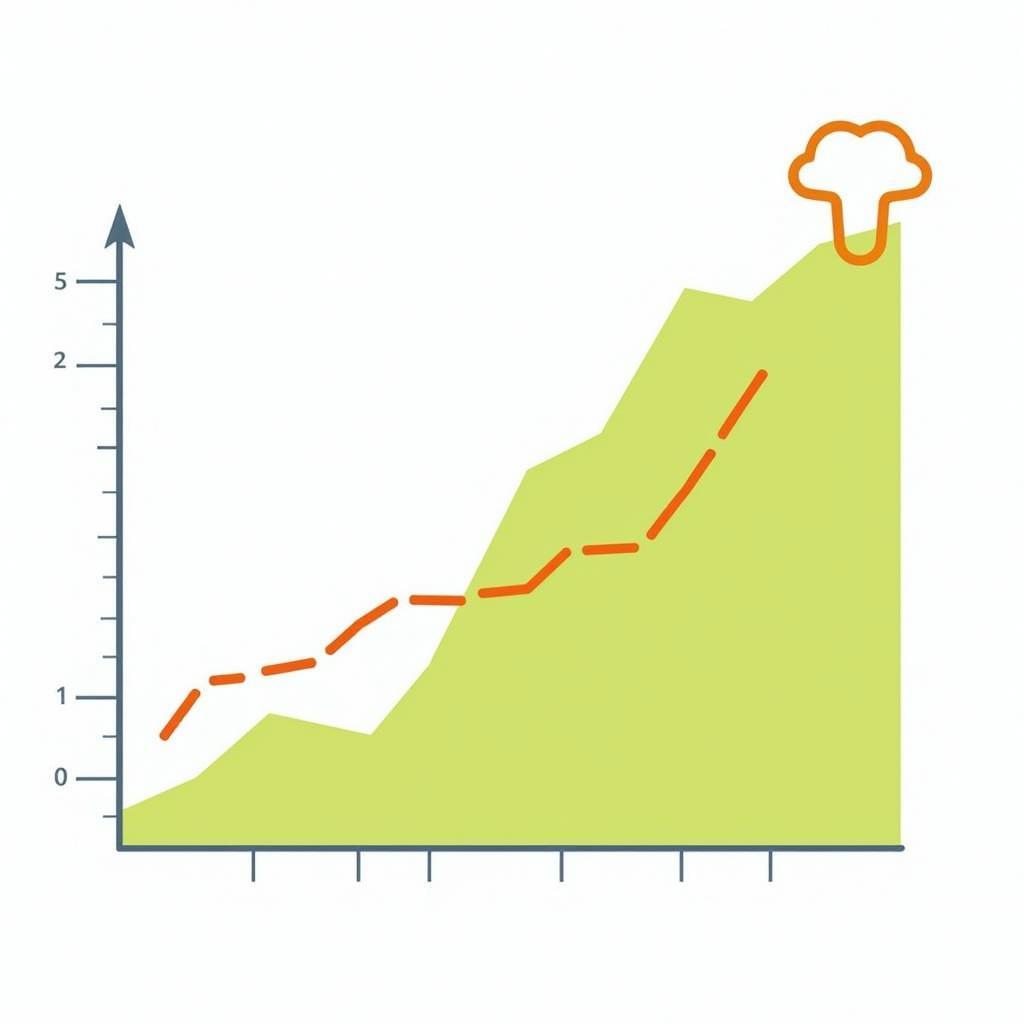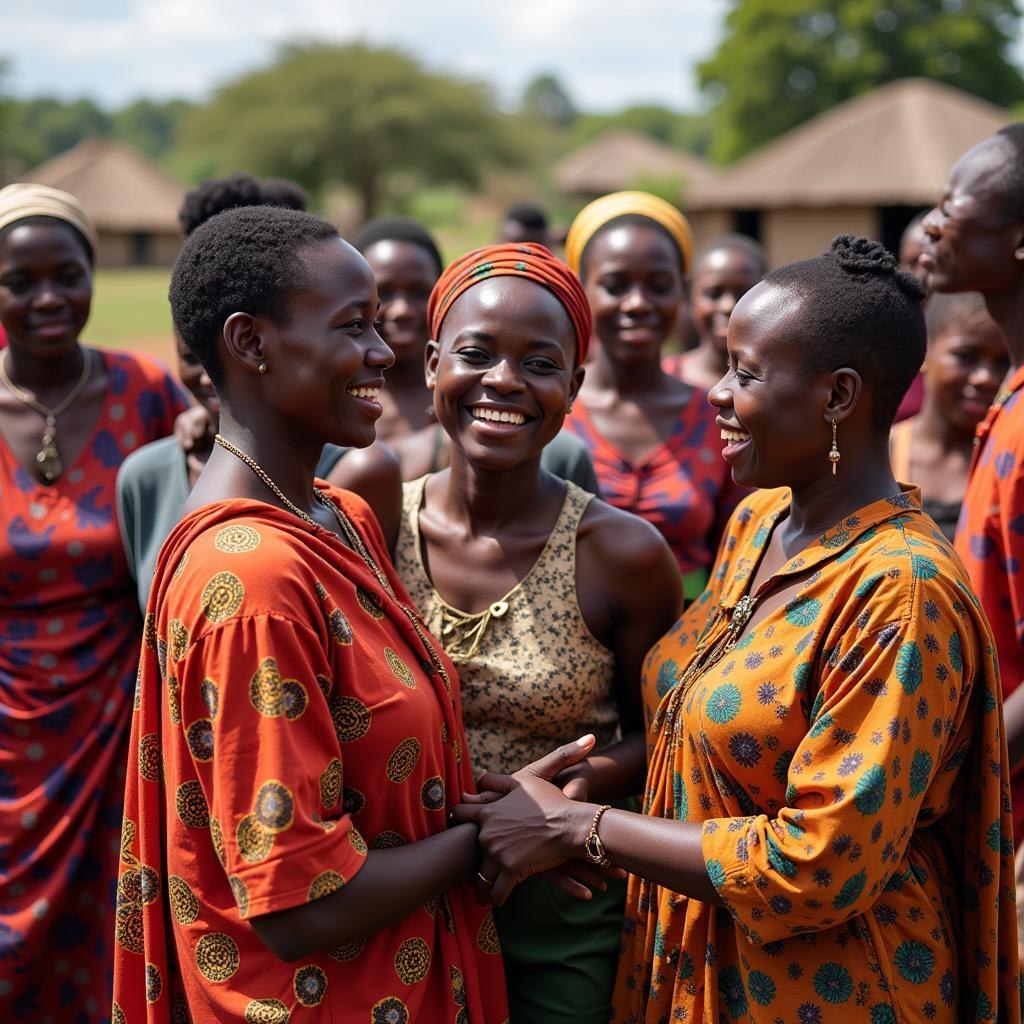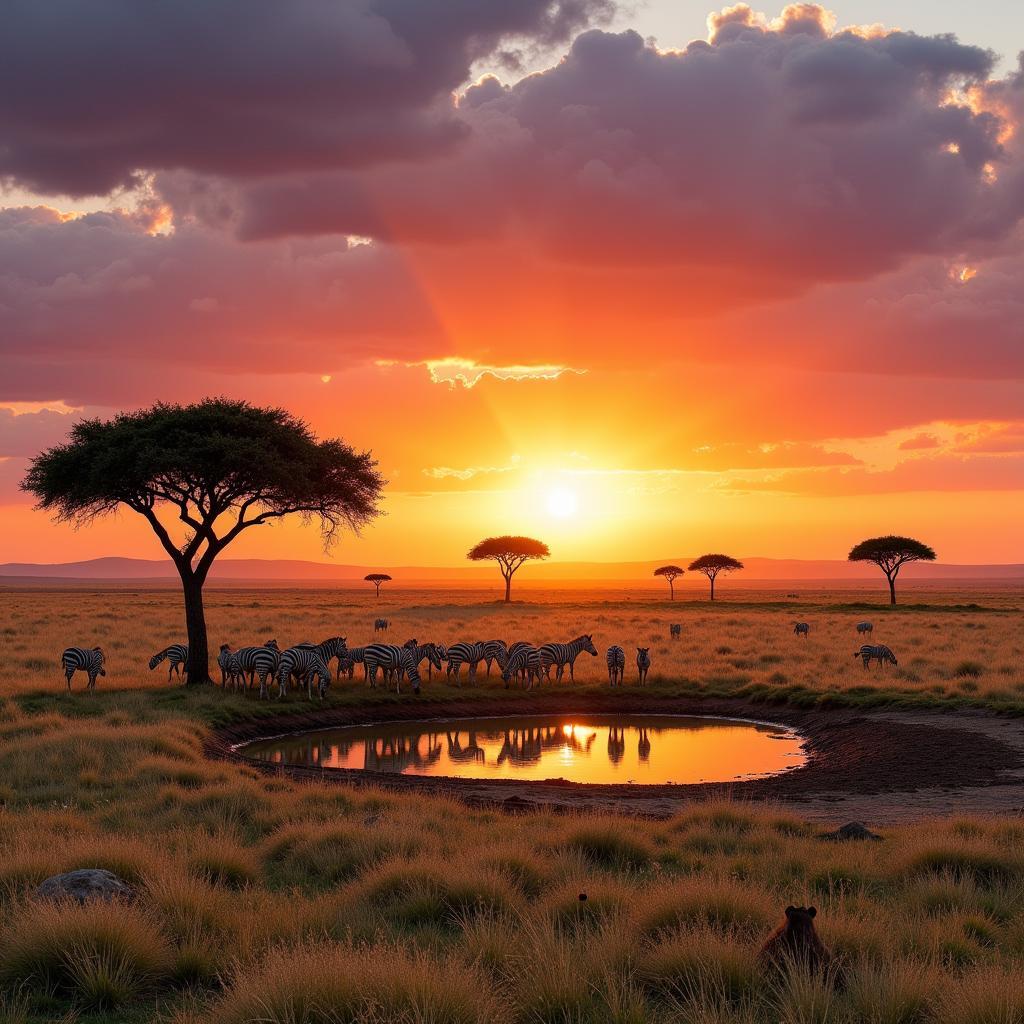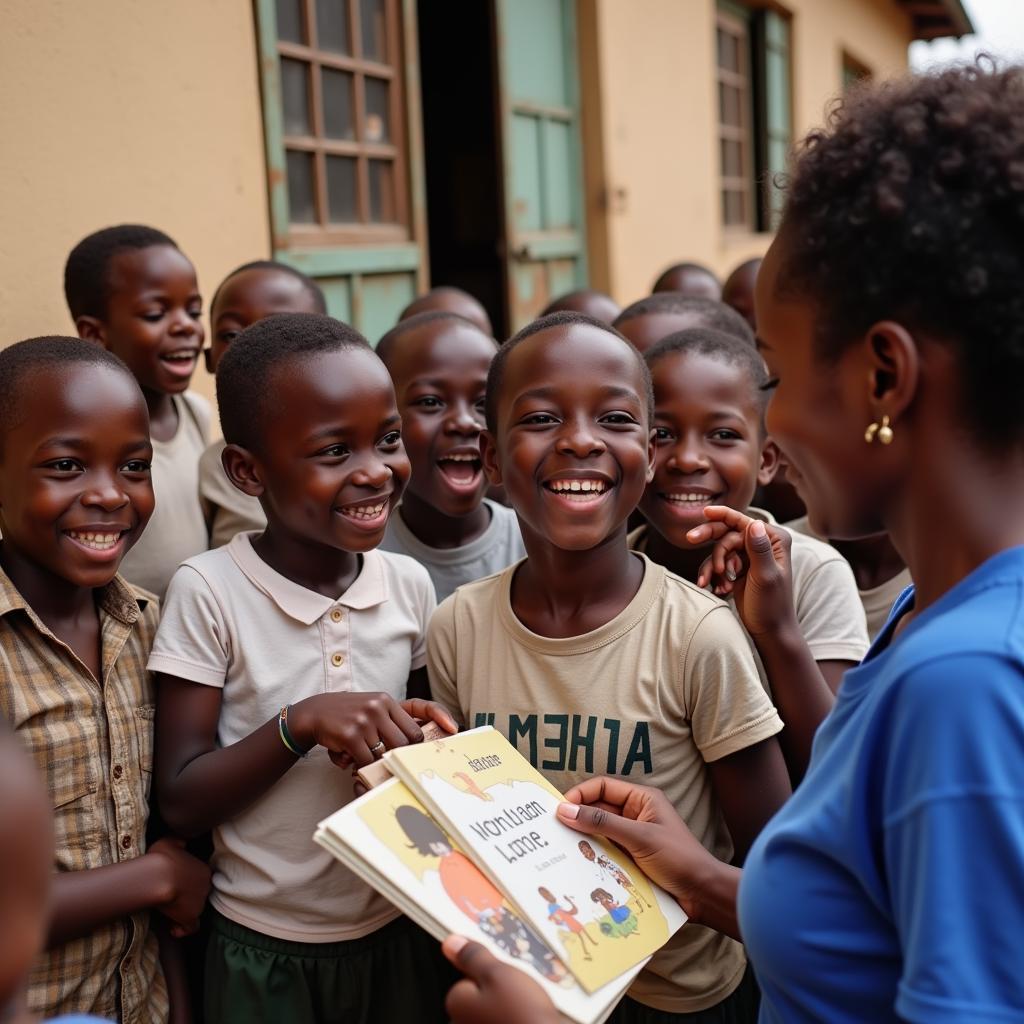The Captivating Rhythm of African Girls Dancing
African Girls Dancing is a vibrant tapestry of culture, tradition, and sheer joy. From the rhythmic sway of hips to the intricate footwork and expressive gestures, their dances tell stories, celebrate life’s milestones, and connect communities.
 African Girls in Traditional Ceremony Dance
African Girls in Traditional Ceremony Dance
The Language of Movement: More Than Just Steps
In many African cultures, dance transcends mere entertainment; it’s a form of communication, a way of life. Each dance tells a story – of love, harvest, ancestry, or even daily life. The graceful movements of the arms, the powerful stomps of the feet, and the expressive gazes all convey meaning, narrating tales passed down through generations.
For example, the famous “Ndumo” dance of the Maasai people in Kenya and Tanzania is a coming-of-age ritual for young women. As they leap high into the air, they showcase their strength and agility, signifying their readiness for womanhood and marriage.
A Tapestry of Styles: From East to West Africa
The beauty of African dance lies in its incredible diversity. Just as languages and traditions vary across the continent, so too do the dances.
West African Rhythms:
- Senegal: Known for its energetic “Sabar” drumming and the vibrant costumes of its dancers, Senegal offers a feast for the senses.
- Ghana: The “Adowa” dance, performed by the Ashanti people, features intricate movements of the hands and feet, often accompanied by specific gestures that mimic everyday activities.
East African Grace:
- Kenya: The “Isukuti” dance of the Isukha and Idakho communities is a vibrant display of energy and athleticism, with men and women often competing on the dance floor.
- Tanzania: Beyond the Maasai “Ndumo,” Tanzania boasts a variety of traditional dances, such as the “Sindimba” from the north, which features elaborate costumes and rhythmic movements.
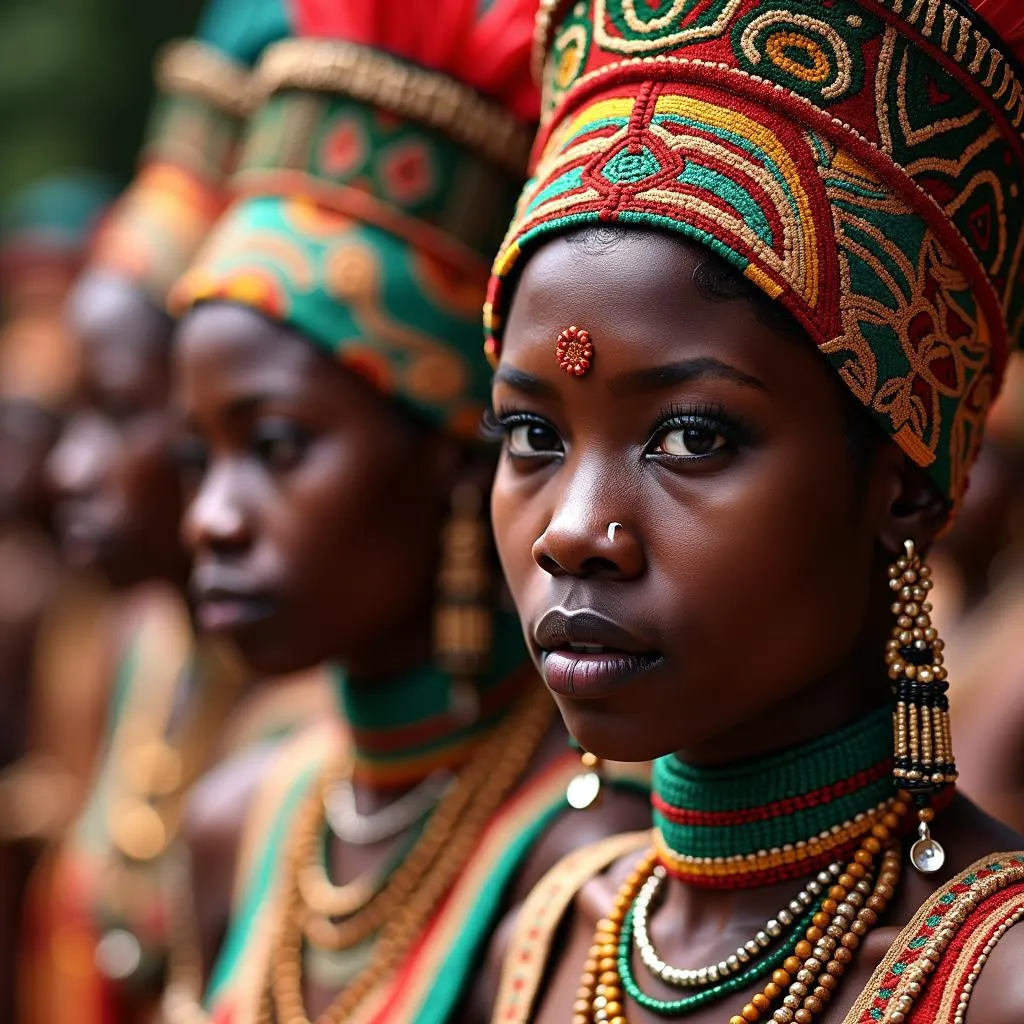 Colorful Traditional African Dance Costumes and Accessories
Colorful Traditional African Dance Costumes and Accessories
The Power of Music: The Heartbeat of African Dance
Music is the lifeblood of African dance. The intricate rhythms of drums, the melodic tunes of flutes, and the soulful voices of singers blend together to create an irresistible impulse to move.
The Drum: A Sacred Instrument:
The drum holds a special place in many African cultures. It’s not merely an instrument; it’s a means of communication, a way to connect with ancestors, and a symbol of community. The rhythmic patterns of the drums dictate the tempo and energy of the dance, guiding the dancers’ movements and adding layers of meaning to the performance.
Beyond the Drum: Exploring Musical Diversity:
While the drum plays a central role, African dance music incorporates a diverse range of instruments. From the “kora” (a West African harp-lute) to the “mbira” (a thumb piano from Southern Africa), each instrument adds its unique voice to the musical tapestry.
The Future of Tradition: Keeping the Rhythm Alive
In a rapidly changing world, African dance faces the challenge of preserving its traditions while embracing modernity. Many young Africans are finding innovative ways to fuse traditional dance forms with contemporary music and styles, creating a dynamic fusion that appeals to new generations.
Dance Schools and Cultural Centers:
Across Africa, dance schools and cultural centers are playing a vital role in ensuring the continuity of traditional dances. They offer a space for young people to learn the steps, understand the cultural significance, and carry the legacy forward.
 Young African Girls Learning Traditional Dance
Young African Girls Learning Traditional Dance
Experience the Magic: Witnessing African Girls Dancing
To witness African girls dancing is to witness the embodiment of cultural heritage and the celebration of life itself. Their movements, filled with grace, power, and joy, offer a glimpse into the rich tapestry of African traditions and the enduring spirit of its people.
Whether you’re fortunate enough to experience a live performance or captivated by a video online, let the rhythm move you, appreciate the stories told through each gesture, and celebrate the beauty and diversity of African culture.
